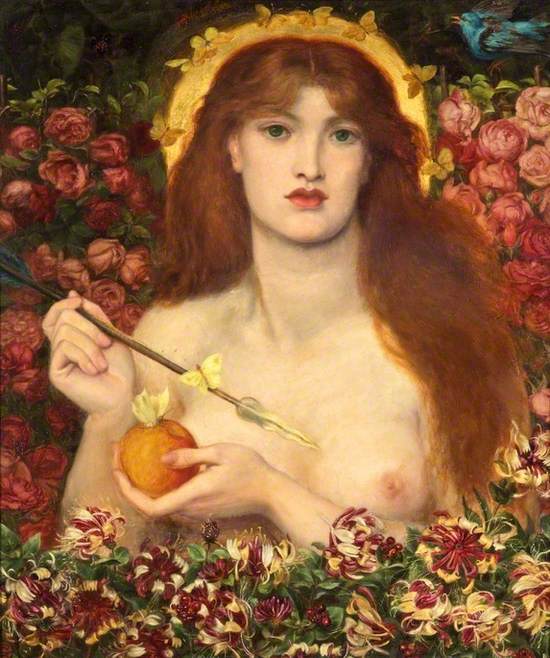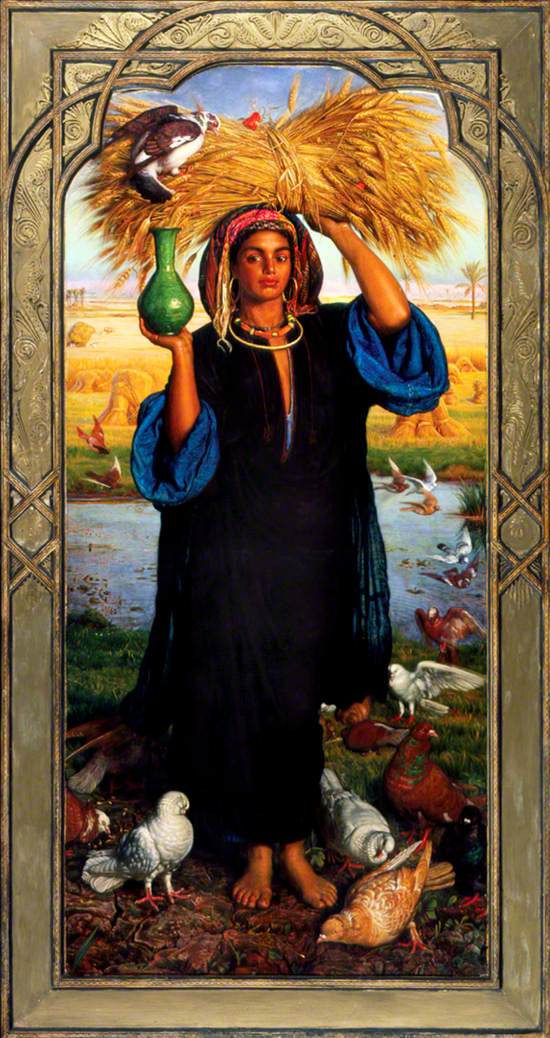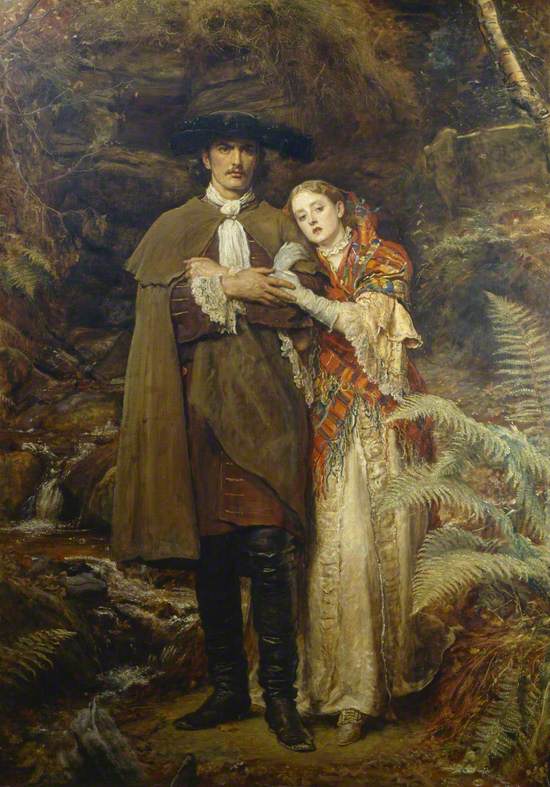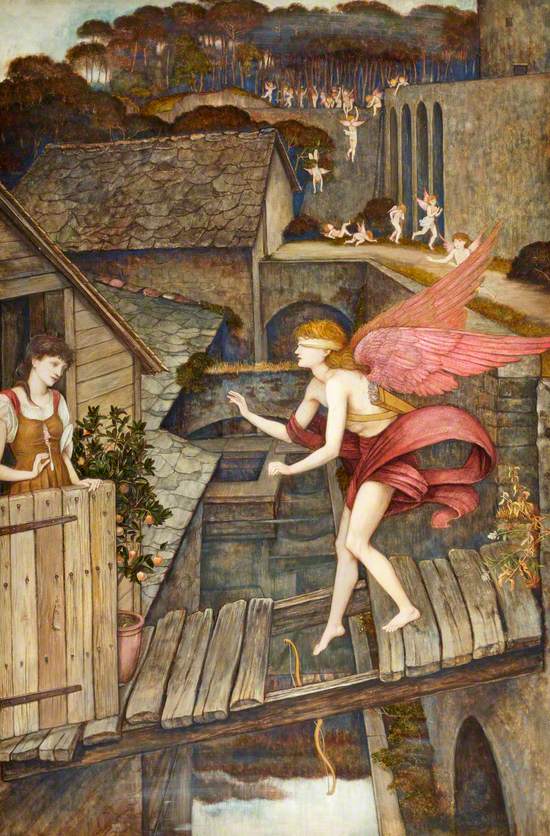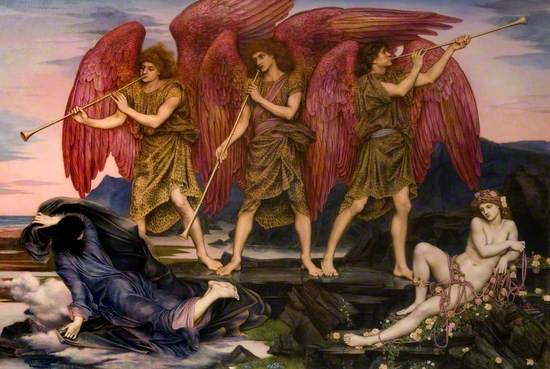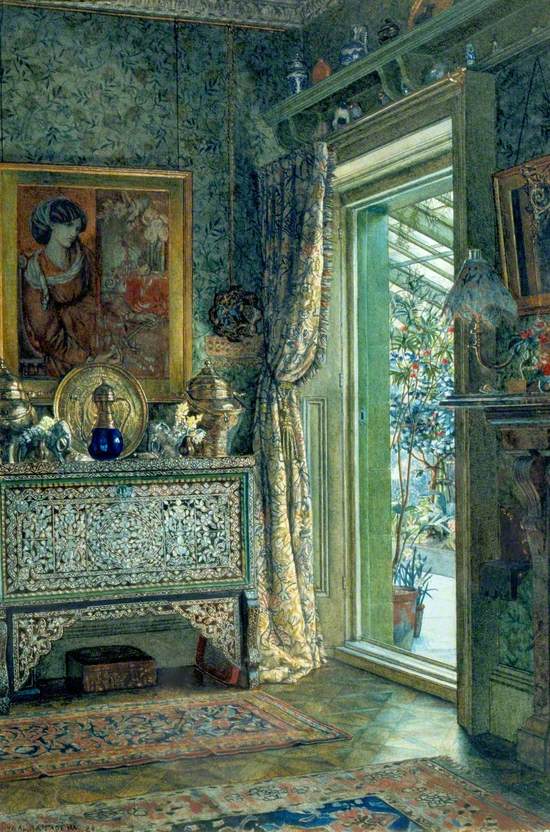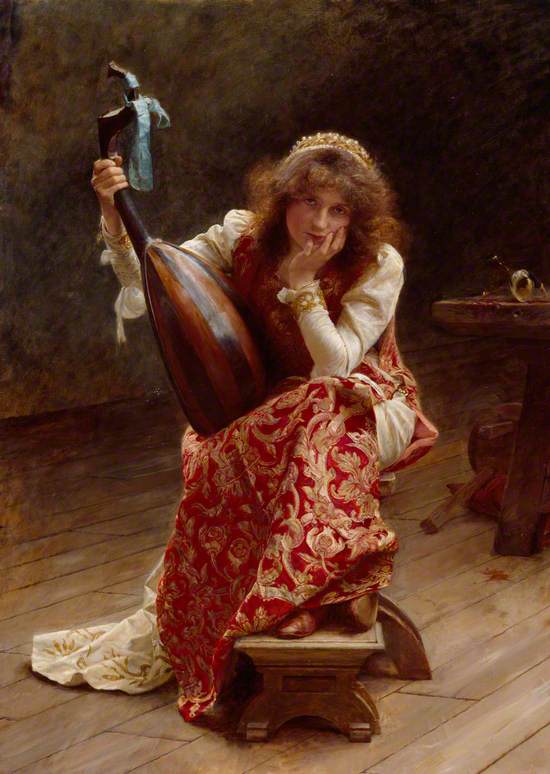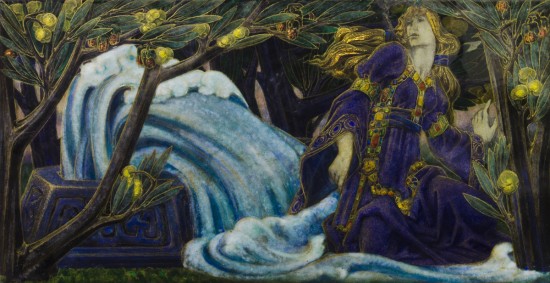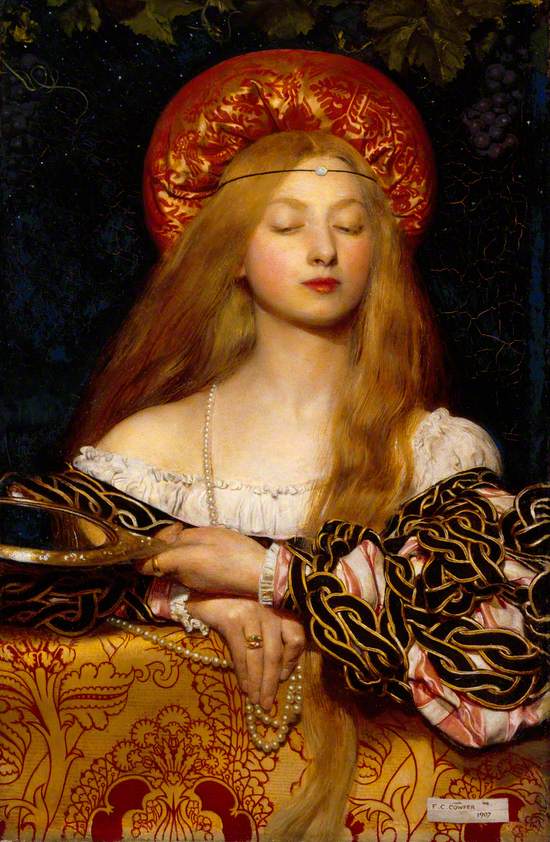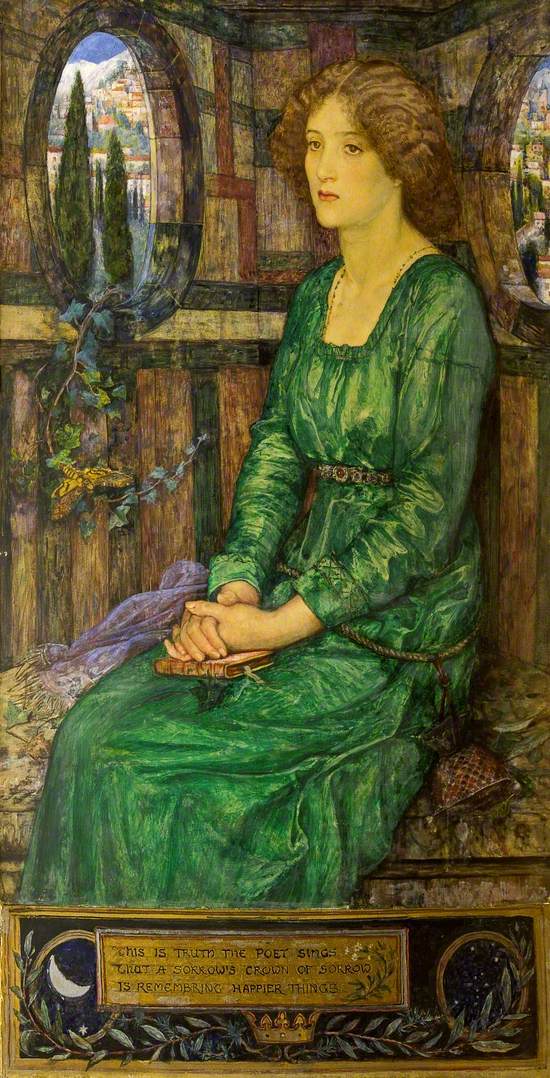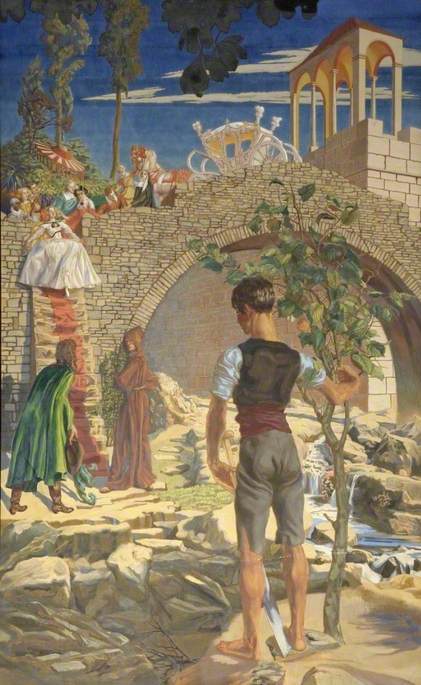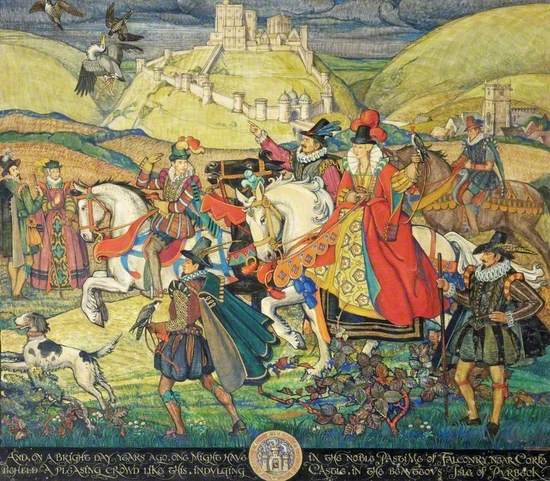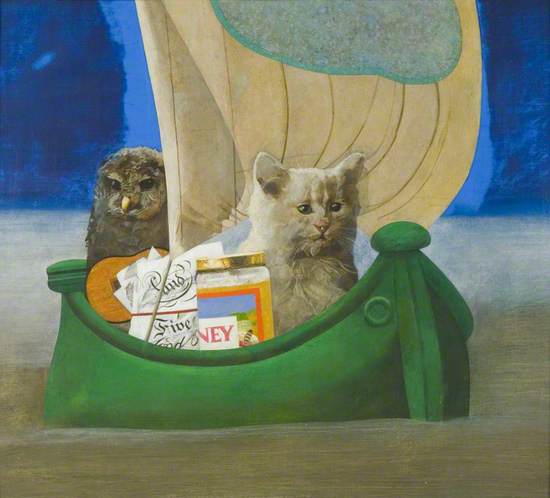This is a selection of highlights from 'Beyond the Brotherhood: The Pre-Raphaelite Legacy'. Starting in Renaissance Italy and ending with artwork from the 'Game of Thrones' TV show, the exhibition aims to demonstrate how this avant-garde movement has impacted on art and artists ever since, even inspiring fantasy artists, illustrators and film makers today. Presented chronologically, this Curation features works in the collections of the Russell-Cotes Art Gallery & Museum and Southampton City Art Gallery as well as from lenders to the exhibition. This exhibition was made possible with a grant from the Weston Loan Programme with Art Fund.
Venus Verticordia
From the mid-1860s, Rossetti painted a succession of ravishing maidens, hymns to beauty, exemplified by Venus Verticordia [The Changer of Hearts]. Venus Verticordia was supposed to turn a girl’s heart away from lust to chastity. Yet according to his sonnet, this sensuous painting was meant to turn the hearts of men to love:
Alas! The apple for his lips, - the dart That follows its brief wetness to his heart...
The fluttering butterflies in the goddess’s halo recall the transience of life; they were seen to embody the soul. In the Language of Flowers, the honeysuckle signified the ‘bonds of love’.
Dante Gabriel Rossetti (1828–1882)
Oil on canvas
H 81.3 x W 68 cm
Russell-Cotes Art Gallery & Museum
Afterglow in Egypt
In 'Afterglow in Egypt' the fragile vessel held aloft by the young girl confirms her purity. She might resemble an Egyptian goddess of plenty, but Hunt intended this image of fecundity to be a warning; even great civilisations can fade away. Every object, a material fact, was intended to express a moral truth. You must study every meticulously rendered detail to understand his meaning. A lily signified the Virgin’s virginity, an apple foretold the fall of Adam and Eve. Dogs were equated with fidelity, while a black cat was the witch’s familiar. Victorian audiences were familiar with such symbols, which were derived from the Bible and ancient mythology.
William Holman Hunt (1827–1910)
Oil on canvas
H 185.4 x W 86.3 cm
Southampton City Art Gallery
The Bride of Lammermoor
Knowing their appeal, Millais favoured subjects from popular novels. Here he successfully captures a dramatic moment in Sir Walter Scott’s 'The Bride of Lammermoor' (1819). Yet another of his star-crossed couples, Edgar, Master of Ravenswood, has just rescued Lucy, the daughter of his enemy Sir William Ashton, from a wild bull.
In the 1860s, Millais began to paint in a broader style. While his former comrades saw this as selling-out for profit and fame, Millais reasoned his new found boldness grew from increasing confidence.
John Everett Millais (1829–1896)
Oil on canvas
H 151.1 x W 107.3 cm
Bristol Museums, Galleries & Archives
Love Betrayed
Moving permanently to Florence in 1880, Stanhope fell completely under the sway of the early Italian Renaissance masters. He developed an allegorical language of complex symbols; a blind cupid is about to fall through a gap in the bridge. Cupid has been duped either by false love or false hope. In the background, a bevy of cupids is seen falling down a cliff; their attempt to stave off disaster is futile.
John Roddam Spencer Stanhope (1829–1908)
Watercolour & bodycolour on card
H 80.5 x W 53 cm
Russell-Cotes Art Gallery & Museum
Aurora Triumphans
The theme of this painting, the Goddess of Dawn overcoming the bonds of Night, reflected De Morgan’s spiritual beliefs; like many of her generation she was attracted to mysticism and theosophy. Following her marriage to the ceramicist William De Morgan (1839–1917) in 1877, the couple began a prolonged ‘experiment’ with automatic (or trance) spirit writing. 'Aurora Triumphans' was exhibited at the Grosvenor Gallery in 1886. This rival to the Royal Academy provided a platform for women artists.
Evelyn De Morgan (1855–1919)
Oil on canvas
H 114.5 x W 170.5 cm
Russell-Cotes Art Gallery & Museum
Drawing Room, 1a Holland Park
Today, many Pre-Raphaelite works are in major public institutions. However, they were originally destined to beautify Victorian homes. Anna Alma-Tadema’s painting offers us a glimpse of the ‘House Beautiful’, recording the home of Aglaia Coronio (1834–1906) a member of London’s influential Greek community. The painting within the painting, Rossetti’s Study for Mariana (1868), is surrounded by all manner of striking objet d’art; Indian and Persian metalwork, precious Persian rugs and porcelain and pottery from China and Japan. Acquired by Sir Merton Russell-Cotes (1835–1921) in 1893, this painting may have inspired his own House Beautiful, now the Russell-Cotes Art Gallery & Museum.
Anna Alma-Tadema (1867–1943)
Watercolour & bodycolour on paper
H 27 x W 18 cm
Russell-Cotes Art Gallery & Museum
Apres?
Southampton-born Gregory achieved fame with Boulter’s Lock (1897), which shows the Victorians at play. Its success ensured his election to the Royal Academy. Yet his diploma work was 'Après?' in which the model is beautifully attired in historical costume. Perhaps he was trying to prove a point, not only his ability to render silks and satins but also to be poetic. The enigmatic title may refer to a song 'Après un Rêve' (After the Dream) by Gabriel Fauré and Romain Bussine (1878). Gregory’s model, who has been acting out a fantasy, must now return to the real world.
The Lady Shinain at the Well of Knowledge
According to Irish myth the Lady Shinain, the granddaughter of the sea god Lir, went to Connla's Well to receive wisdom. This caused the well to burst and she was drowned. The resultant flood became the River Shannon. Meave O'Byrne-Doggett trained at the Dublin School of Art, which taught art through a variety of medium including textiles and enamel.
Meave O'Byrne-Doggett (1883–1968)
Enamel on copper
H 18.5 x W 35.5 cm
Russell-Cotes Art Gallery & Museum
Vanity
A Vanitas painting, with its symbols of transience, was intended to remind you of the brevity of life. However, Cowper’s painting is really an ode to beauty. Despite her virtuous downcast eyes, the model is slyly looking at herself in the mirror. The serpentine pattern on her dress, which echoes a famous painting by Giulio Romano (1499–1546), suggests this sorceress is likely to bewitch you with her beauty.
Maria Virgo
In 'Maria Virgo' the inscribed nimbus fulfils its traditional role, symbolising the sanctity of the Virgin Mary. The floral attribute, an annunciation lily, signifies Divine Love. The three fully opened blooms represent the Trinity: God the Father, God the Son and the Holy Spirit. Cooksey converted to Roman Catholicism at the age of twenty.
May Louise Greville Cooksey (1878–1943)
Oil on board
H 39.5 x W 29.5 cm
Russell-Cotes Art Gallery & Museum
1916
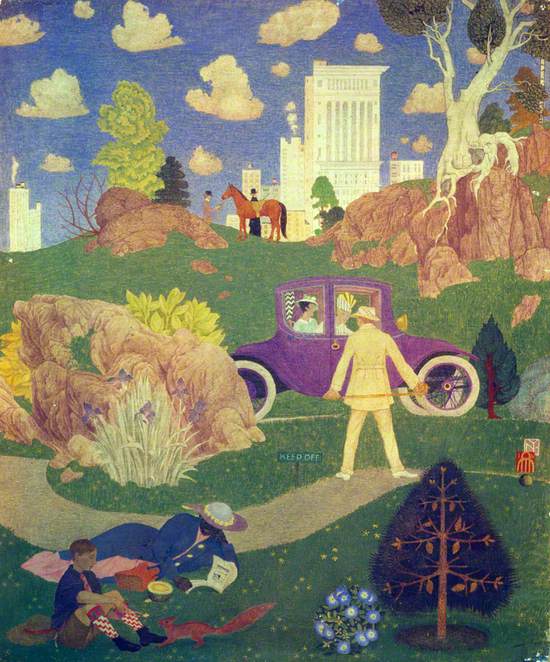
Central Park, New York
Armfield and his wife, the playwright Constance Smedley (1876–1941), spent the First World War in America. The charmingly archaic 'Central Park, New York' dates to this period. Its deliberate naivety, lack of perspective, clear outlines and bold colours, recalls Italian quattrocento paintings.
Maxwell Ashby Armfield (1881–1972)
Tempera on canvas
H 64.2 x W 39 cm
Southampton City Art Gallery
Remembering Happier Things
At the age of 61, Ford surprised his friends by marrying a young war widow, Emily Amelia Hoff, who modelled for this melancholic painting. The verse by Tennyson mournfully reads: ‘This is truth the poet sing’s That a sorrow’s crown of sorrow is remembering happier things’ Is our lady looking back to life before the War or even still mourning for her first husband? Pre-Raphaelite romanticism acquired a new resonance in post-war Britain, taking its legacy into the twentieth century.
Henry Justice Ford (1860–1941)
Watercolour on paper
H 62.3 x W 37 cm
Russell-Cotes Art Gallery & Museum
At the Well of Samaria
One of the original aims of the Pre-Raphaelite Brotherhood was to ‘have genuine ideas to express’. The Gospel tale of the Samaritan woman at the well is one of redemption. The Jews and the Samarians were bitter enemies. Jesus asks the woman, who we later learn is sinful, for a drink. She is surprised but he replies ‘I would give you living water… Whoever drinks my water will never need more. My water will be like a stream that gives eternal life’.
As the leader of the Birmingham Group of Artist-Craftsmen, Southall led the revival of painting in tempera from the 1890s. In tempera, coloured pigments are bound with a water-soluble binder such as egg-yolk.
Joseph Edward Southall (1861–1944)
Tempera on canvas
H 91 x W 99 cm
Russell-Cotes Art Gallery & Museum
'I had a little nut tree'
Beaumont largely worked in tempera, favouring fairy stories and nursery rhymes such as 'I had a little nut tree'. In the background, the King of Spain’s daughter is descending the steps:
I said, 'So fair a princess Never did I see, I'll give you all the fruit From my little nut tree.'
Elfreda Gertrude Beaumont (1891–1987)
Tempera on panel
H 131 x W 80.5 cm
Russell-Cotes Art Gallery & Museum
And on a Bright Day Years Ago...
Born in Southbourne-on-Sea, Isabel Saul studied at the Bournemouth School of Art. Her sister Mary contributed the calligraphy which enhances many of her canvases. Corfe Castle in the Beauteous Isle of Purbeck is inscribed ‘And, on a bright day, years ago one might have beheld a pleasing crowd like this indulging in the noble pastime of falconry near Corfe Castle in the Beauteous Isle of Purbeck’. The ‘pleasing crowd’ are gaily dressed in Elizabethan costume.
Isabel Florrie Saul (1895–1982)
Tempera on board
H 55.5 x W 63.5 cm
Russell-Cotes Art Gallery & Museum
1981
The Owl and the Pussycat
Peter Blake was a founding member of The Brotherhood of Ruralists which broke on to the art scene in 1976. They revived the English Pastoral tradition by looking back to the Pre-Raphaelites, William Shakespeare (1564-1616) and poets such as Edward Lear (1812-1888) and William Wordsworth (1770–1850).
Poet-painter Edward Lear provides the theme for 'The Owl and the Pussycat' who went to sea ‘in a beautiful pea-green boat’. Best known for his nonsense-rhymes, Lear moved in Pre-Raphaelite circles, being taught to paint in oils by Hunt.
Peter Blake (b.1932)
Tempera on hardboard
H 27.3 x W 31.8 cm
Bristol Museums, Galleries & Archives
Explore artists in this Curation
View all 16-
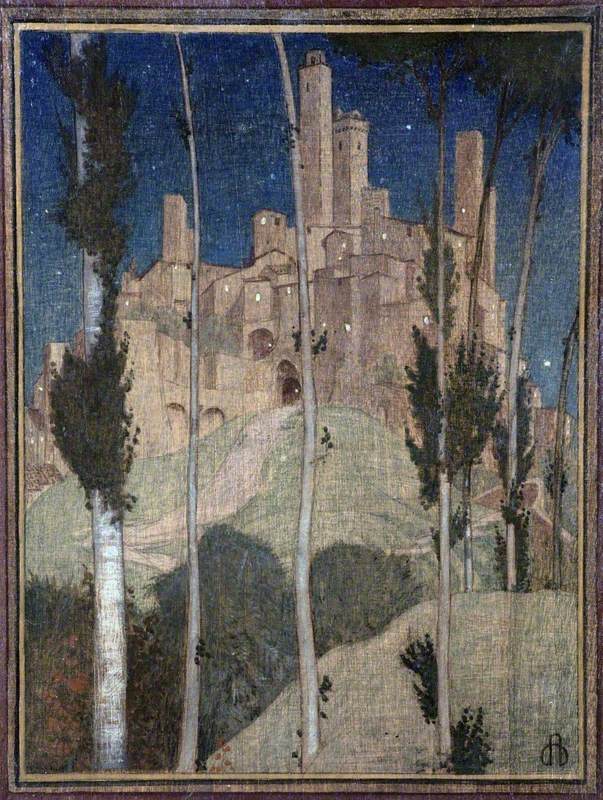 Maxwell Ashby Armfield (1881–1972)
Maxwell Ashby Armfield (1881–1972) -
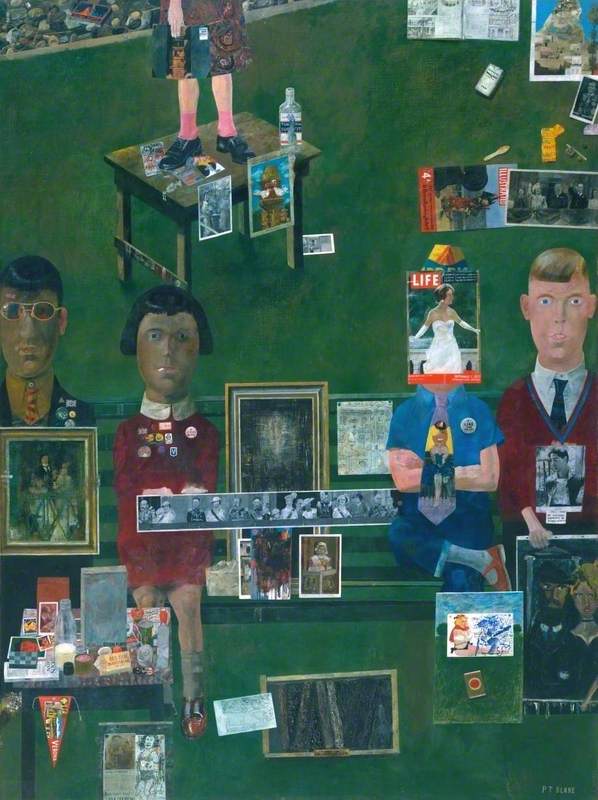 Peter Blake (b.1932)
Peter Blake (b.1932) -
 Isabel Florrie Saul (1895–1982)
Isabel Florrie Saul (1895–1982) -
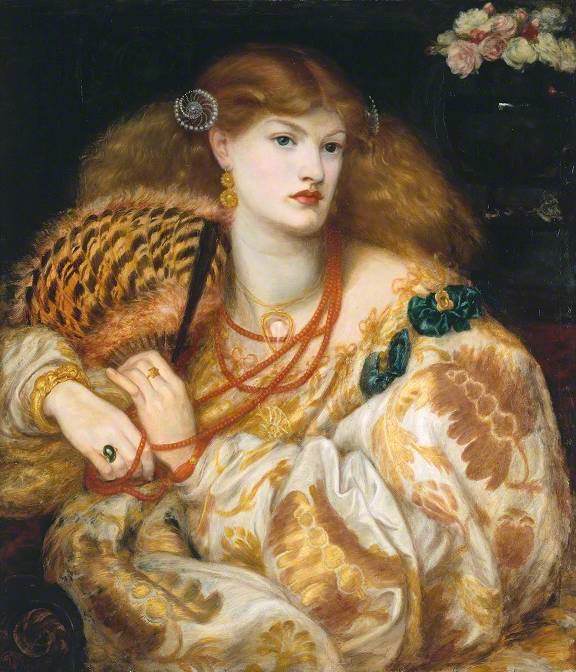 Dante Gabriel Rossetti (1828–1882)
Dante Gabriel Rossetti (1828–1882) -
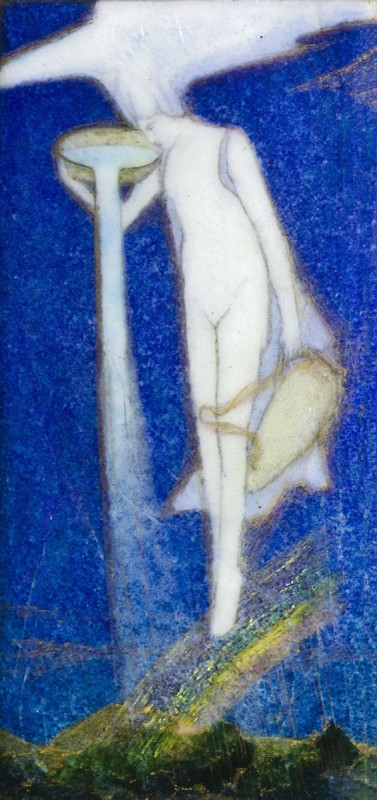 Meave O'Byrne-Doggett (1883–1968)
Meave O'Byrne-Doggett (1883–1968) -
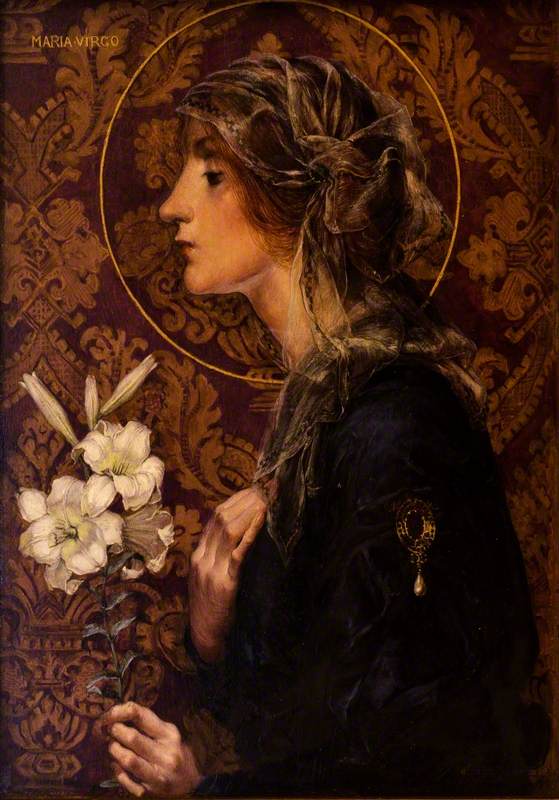 May Louise Greville Cooksey (1878–1943)
May Louise Greville Cooksey (1878–1943) -
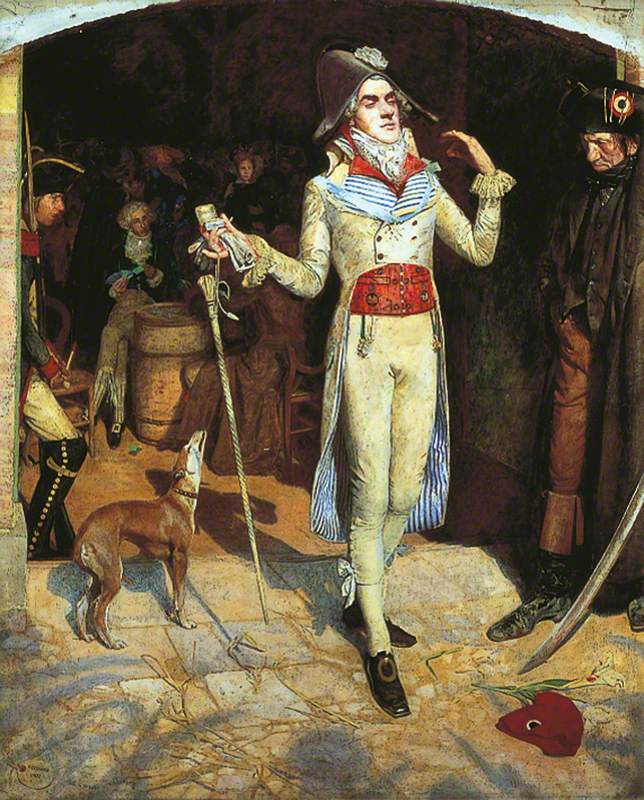 Frank Cadogan Cowper (1877–1958)
Frank Cadogan Cowper (1877–1958) -
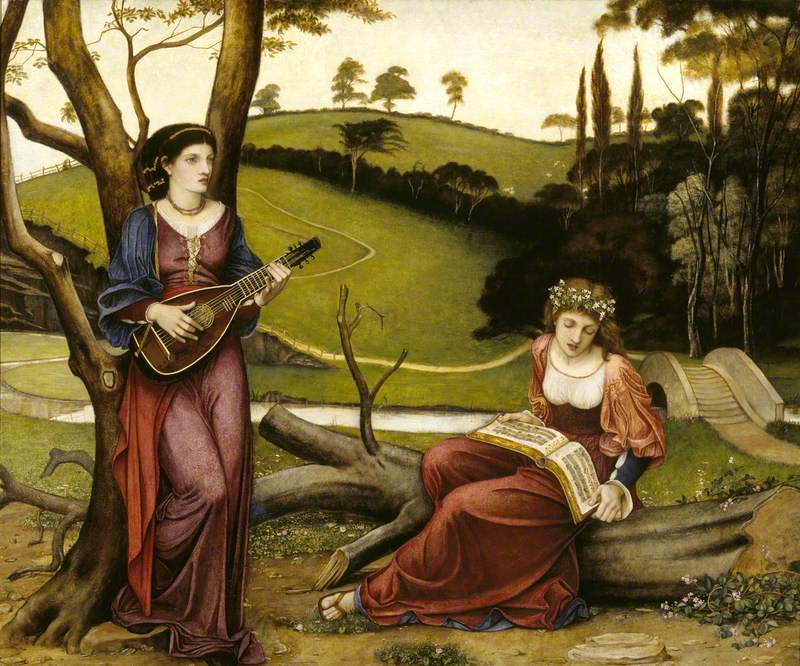 John Roddam Spencer Stanhope (1829–1908)
John Roddam Spencer Stanhope (1829–1908) -
 William Holman Hunt (1827–1910)
William Holman Hunt (1827–1910) -
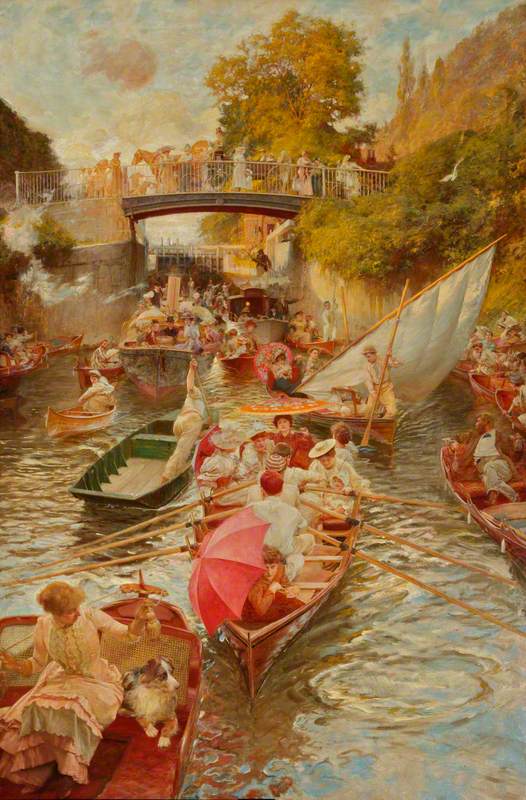 Edward John Gregory (1850–1909)
Edward John Gregory (1850–1909) - View all 16
